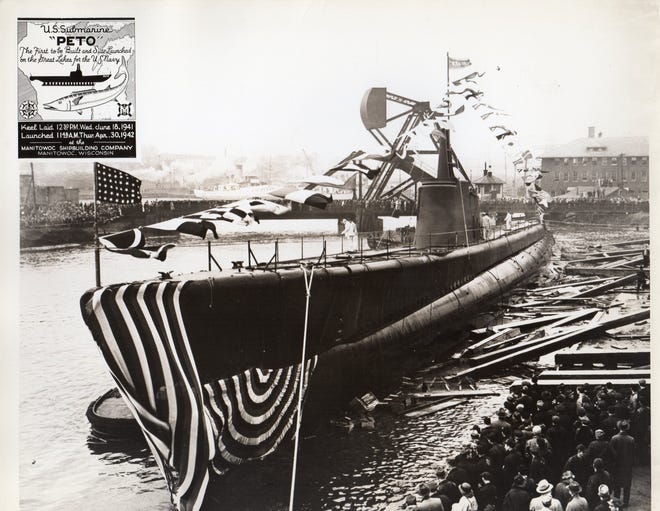Manitowoc residents did their part to support the war effort during World War II. Here's how they contributed.

Dec. 8, 1941, is the day President Franklin Roosevelt asked Congress to declare war on Japan in response to Pearl Harbor. Congress did just that, and the United States entered the war.
Although not everyone could lend a hand in the war, many helped right from home in Manitowoc.
Some industries and companies produced products that were used in the war, like Mirro and the Manitowoc Shipbuilding Company.
One of these industries that aided the nation in World War II was the shipbuilding industry at the Manitowoc Shipbuilding Company.
Coming into this uncertain time, many workers at the company had no experience building a vessel as intricate as a submarine. A complete wooden mock-up was built as a guide.
In total, more than 7,000 workers worked seven days a week to complete 28 submarines in the span of World War II.
Mirro, known as Aluminum Goods Manufacturing Co. during WWII, also aided the nation during that time. Between 1940 and 1945, the company produced millions of canteens for soldiers as well as brass and steel cartridge casings, fuel tanks for bombers and radar parts.
As is the trend during most wars, as the men go off to war, women typically take over some or most of those jobs. This happened at Mirro during World War II.
Pictured in a 1943 issue of the "Mixing Bowl," a Mirro in-house magazine, were women and men building “droppable” bomber fuel tanks.
Mirro also produced parts for famous fighter planes like Grumman F4F Wildcat, Grumman F6F Hellcat and Grumman TBF Avenger.

Some of the parts produced by Mirro were the main and emergency fuel tanks, oil and vacuum tanks, hydraulic reservoirs, oil separators and intake ducts.
The welders who produced aircraft parts had to meet the very strict standards set by the Army Air Corps and the Navy Department.
Welders needed to have a delicate sense of touch and an inherent sense of cleanliness.
The welders who met these standards received an identifying number that was stamped on all the work they completed.
Work done, even by the allowed welders, was tested and examined to make sure there were no errors and that they were seemingly perfectly made.
RELATED: Pearl Harbor 80 years later: 'It was the worst thing I ever saw,' Wisconsin veteran recalls
RELATED: Manitowoc Shipbuilding Company did more than build WWII submarines

As in most wars, civilians stepped up to the plate to help their nation, even if they did not have the expected experience for the job.
For some workers who built submarines, it might have been their first time using the tools or working with the specific materials.

Despite not knowing exactly what they were doing at first, they did it for their country.
Just as soldiers directly aided the war effort, civilians indirectly aided to the war effort by making supplies for soldiers or battles. It is especially interesting to see how Manitowoc responded to the uncertainty the start of the war brought.
The effort and dedication of workers to help their nation in a time of crisis is something that has not been forgotten — and will not be forgotten for a very long time.
Andrea Linsmeier is program coordinator at Manitowoc County Historical Society.